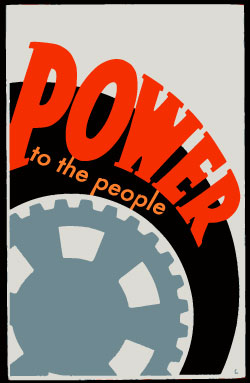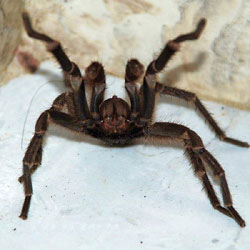
Source: Power to the People, j4p4n, Open Clip Art Library
You now have the definitions of appositives and phrases under your belt—the two ingredients of appositive phrases. You also know that appositives function as adjectives in a sentence (i.e., they modify nouns or pronouns). There’s another crucial piece of information to know, however, before you begin to use appositive phrases in all their power.
It’s true that appositives function as adjectives when they appear in a sentence, but did you know that appositive phrases are made up of nouns? Yes, that’s right. Appositive phrases act as adjectives, but they are made up of nouns.
You know that when you name something or someone, you are using a noun. When you immediately rename the same object or person, you are also using a noun to provide further information, but you are using it as an appositive, sometimes in a single word description or sometimes in a phrase. The renamed object or person becomes an adjective that describes the original object or person.

Source: Brazilian tarantula in attacking position,
Sascha Grabow, Wikimedia Commons
Here are two more examples of appositive phrases (which, of course, contain nouns):
- A long-legged and scary creature, the tarantula came creeping up the stairs toward my room.
- The quarterback called his favorite play, the double fake end run.
Notice in the first example that the appositive phrase, a long-legged and scary creature, comes at the beginning of the sentence before the noun it modifies, tarantula. The placement of the appostive phrase before the noun being modified happens less frequently. Also, the noun creature at the end of the phrase satisfies one of the main criteria for an appositive; it’s a noun that renames another noun or pronoun. In terms of punctuation, only one comma is needed, and it is placed directly after the appositive phrase.
In the second example above, the appositive phrase, the double fake end run, comes at the end of the sentence after the noun it modifies, play. Appositive phrases often appear after the nouns they modify. Again, only one comma is needed, but this time it is placed before the appositive phrase.
So now you know that appositives can be single words or a group of words in a phrase. You learned that all appositives consist of nouns or pronouns that modify other nouns or pronouns. You also learned that single-word appositives and appositive phrases usually come directly after the words they modify. The last thing you need to know is how to punctuate appositives. You probably noticed that we mentioned punctuation in the two examples above. Now, read the two examples of single-word appositives below and make a mental note about the punctuation.
- My brother Robert has an annoying habit of cracking his knuckles.
- My mother, Toni, called me at camp to tell me not to forget to brush my teeth.
Can you see any differences in these two examples? Both use an appositive that contains a name, a proper noun. Both appositives also describe another noun (brother and mother). However, there is a difference.
In the first example, there is no comma after brother, but in the second example, there is a comma after mother. Why are they different? The rule is this: Use a comma whenever the information in the appositive phrase is nonessential. Most people only have one mother, so the information that her name is Toni can be thought of as nonessential. In other words, without her name, the meaning of the sentence is not altered.
In the first example, no comma is needed around the appositive, Robert. This is because the writer evidently has more than one brother, and without naming him, we would be left wondering which of the writer’s brothers to avoid watching at the dinner table. The name in this sentence is essential. Therefore, no comma is needed. Keep in mind that the majority of appositives and appositive phrases need commas around them, so when in doubt, use a comma or commas, depending on the placement of the appositive phrase.
Until now, the appositives and appositive phrases in this lesson’s examples have added details to nouns that also happen to be the subjects of their sentences. Occasionally, however, an appositive will refer to a noun that isn’t the subject. Read the next example.
- My mom lost her cell phone at the mall, the one with over 200 stores.
In this example, mom is the subject, and she’s probably a very unhappy subject! The appositive, the one with over 200 stores, refers to the mall. The mall is part of a prepositional phrase that begins with at. The main thing to understand is that the appositive phrase still refers to a noun.
Now, to become more comfortable with using appositives in your own writing, try to apply what you’ve learned. The following sentences contain appositive phrases. Decide if the sentence is punctuated correctly or incorrectly and click on “Correct” or “Incorrect” for each question below.

- In a shady area, a small cave among the rocks, we ate our picnic lunch.
- I called my friend Juan and told him I wasn’t going to be able to make it to the game Saturday.
- My jacket, a yellow windbreaker, got lost on the bus on the way home from practice.
- He is an excellent gamer, a champion with his thumbs and fingers.
As you can see, appositives and appositive phrases are powerful tools to use in your writing to add details about something or someone and give your reader more information.